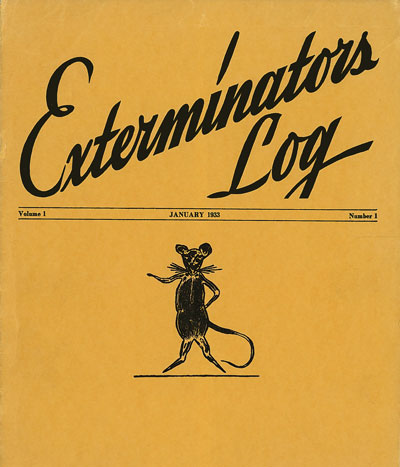 1930s
1930s
1. First termiticide patented
Frank Lyons, who spent 44 years (1927-1971) with what’s now known as Rentokil Terminix, was granted 14 patents related to termite control, including the first termiticide in 1932. He also helped develop the barrier treatment methods for termites.
2. Exterminators Log
Founded in 1933, PMP Hall of Famer Al Cossetta (Class of 2002) saw a need for a professional journal to unite the industry. Cossetta published a publication covering treatment tips, research news, supplier ads and homespun wisdom. That publication is known today as Pest Management Professional (PMP).
3. J.J. Davis befriends the industry
2000 PMP Hall of Famer John June Davis, a Purdue University professor and department head, played major roles in what’s known today as the National Pest Management Association (NPMA) and the Indiana Pest Management Association (IPMA). He sided with exterminators when it wasn’t deemed “dignified” for entomologists to associate with bug killers.

Bill Buettner
4. National association founded
1998 PMP Hall of Famer Bill Buettner is the father and first president of the National Association of Exterminators and Fumigators, known today as the NPMA. This second-generation PMP traveled to Washington during World War II to ensure PMPs were exempt from wartime rations of gas — and even from the draft in certain cases — because they performed an essential public health service for civilians.
5. Weisburger focuses on exterminators
In 1934, B. & D.A. Weisburger expanded from life insurance to offering a specific insurance program for the pest management industry. The company was the first to do so.
6. PCO comes into vogue
In 1935, the term “pest control operator” was the winner in a name change contest held by Exterminators Log to help improve the industry’s image. Purdue University professor Dr. Howard Deay won half the prize money, $25, for shortening it to PCO.
7. Association changes name
To sound more professional, the National Association of Exterminators and Fumigators officially became the National Pest Control Association (NPCA) in 1937.

Dr. Thomas Snyder
8. Dr. Snyder lends a professional touch
The U.S. Department of Agriculture’s (USDA’s) Dr. Thomas Snyder was the first professional entomologist to contribute an article to Exterminators Log. His article in the July 1933 issue, “The Founding of New Colonies by Reticulitermes flavipes,” was technical in nature but welcomed by knowledge-hungry readers. During his career, “Tommy Termite” — a member of the PMP Hall of Fame (Class of 2013) — published more than 300 research papers, collected more than 230,000 termite specimens and described about 160 new termite species.
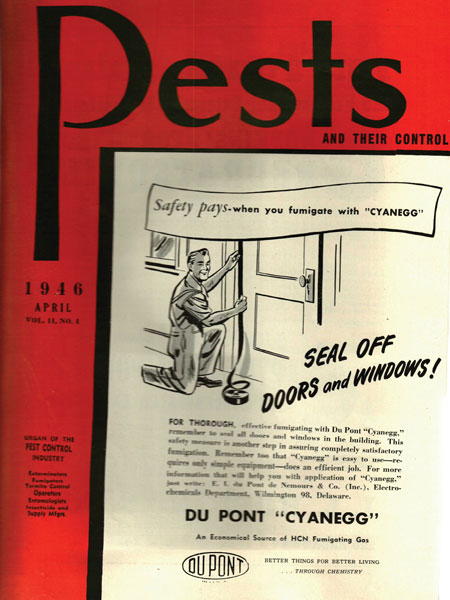 9. The rise of Py
9. The rise of Py
Founded in 1908, McLaughlin Gormley King (MGK) imported ground spices, plant leaves, barks, fruits and flowers for use in pharmaceuticals. By the 1920s, its team realized that shipments containing flowers in the chrysanthemum family were never infested with live insects. They had stumbled upon pyrethrum (Py), a natural insecticide. By 1936, its most important product was Dry Pyrocyde, a dust insecticide made from Py. Today, MGK remains a global leader in Py production.
10. Magazine changes name
Exterminators Log was renamed Pests in 1938, and by the following year, the staff clarified its role by renaming it Pests and Their Control.
11. DDT developed
2004 PMP Hall of Famer Dr. Paul Müller realized the insecticidal properties of dichlorodiphenyltrichloroethane (DDT) in Switzerland in 1939. He later won the 1948 Nobel Prize in medicine for the discovery. Initially, DDT was used to combat malaria, typhus and other insect-borne human disease. About 675,000 tons of it is estimated to have been applied domestically between 1942 and 1972 before it was banned in the U.S.
1940s
12. Mallis’ Handbook published
Arnold Mallis’ The Handbook of Pest Control was printed first in 1945 and currently is in its 10th edition. Mallis, a 2007 PMP Hall of Famer who died in 1984, helped bridge the gap of the old-school entomological community of the 1930s and ’40s with the up-and-comers of the ’60s and ’70s.
13. Pomerantz discovers pest link to disease outbreak
In 1945, part of New York City fell ill with a violent feverish disease. Because Charles Pomerantz’s Bell Exterminating was in the area, the 2010 PMP Hall of Famer researched the illness and was convinced it was because of mites on house mice. This finding led to the discovery of rickettsialpox.
14. Aerosol insecticide developed

Illustration: vdvornyk/iStock / Getty Images Plus/Getty Images
Aerosol insecticides weren’t developed until the U.S. government began funding research during World War II to find a portable way for servicemen to spray malaria-carrying bugs. USDA researchers Lyle Goodhue and William Sullivan developed an aerosol can pressurized by a fluorocarbon in 1943.
15. Warfarin introduced
The research institute that originally patented this anticoagulant in 1944 used its acronym for the trade name — the Wisconsin Alumni Research Foundation. Resistance and the development of other rodenticides made warfarin as a pest control tool less popular in later years.
16. Chlordane introduced
In 1945, Velsicol’s Julius Hyman discovered chlordane. By 1947, he had formed his own company, producing chlordane until Shell Chemical acquired Julius Hyman and Co. in 1950. Chlordane remained a popular, broad-use product until its cancellation by the U.S. Environmental Protection Agency (EPA) in 1988.
17. Brehm and Gilmore invent B&G sprayer
1998 PMP Hall of Famer Bill Brehm was the “B” in the B&G sprayer, while the “G” belonged to Purdue University classmate George Gilmore. After co-inventing this piece of equipment while still students in 1946, Brehm went on to found the B&G Equipment Co. and develop other industry equipment.
18. Federal Insecticide, Fungicide and Rodenticide Act (FIFRA) passes

James Nelson
The original act, passed in June 1947, required all pesticides be registered with the USDA before being marketed or shipped through interstate commerce. It also set efficacy, safety and marketing standards for the industry.
19. Nelson becomes editor
In 1948, magazine founder Al Cossetta sold Pests and Their Control to James Nelson, the son of a pesticide manufacturer. During Nelson’s 19-year tenure as editor, the magazine increased from a 16-page publication to an average of 60 pages. In 1961, Nelson oversaw publishing of the Purdue University correspondence course in Pest Control — a move that helped spawn the Truman’s Scientific Guide to Pest Management Operations. One year later, he launched the publication now known as Landscape Management (a sister brand of PMP’s) as a regular turf pests section in Pest Control.
 20. Magazine renamed
20. Magazine renamed
In 1949, the magazine staff decided the name Pest Control conveyed its mission more succinctly.
1950s
21. Nolen develops tent fumigation
2006 PMP Hall of Famer Truly Wheatfield Nolen is credited with originating tent fumigation for drywood termites in 1950. Nolen’s legacy, which began with a $5 down payment on a $25 truck in 1937, lives on in his family and their companies, Truly Nolen North America and Nozzle Nolen.
 22. Pi Chi Omega founded
22. Pi Chi Omega founded
Six Purdue University entomology students and 1997 PMP Hall of Famer Dr. John Osmun start an industry fraternity, Pi Chi Omega, on campus in 1950. The students included George Gilmore and Bill Brehm of B&G Sprayer fame; 2000 PMP Hall of Famer Clayton Wright, founder of B&G Chemicals & Equipment; Frank Harder; Harlan Shuyler and Clifford Weiss. Today, the group is more than 400 strong and active in scholarship funding.
23. Malathion introduced
Originally intended as a nerve gas used during World War II, the organophosphate had sound insecticidal properties and has been part of urban pest management since.
24. Carbamate insecticides introduced
Developed in 1951 by Geigy Corp., carbamates were derived from a reaction involving carbonic acid. Although under scrutiny by the EPA, this class of insecticide still has its place in the PMP toolbox.
25. NPCA hires Dr. Heal

Dr. Ralph Heal
2003 PMP Hall of Famer Dr. Ralph Heal was the first entomologist to work as the executive director of the National Pest Control Association (NPCA), a post he served for 19 years (1952-1971). He participated in the hearings with the newly formed EPA about the enforcement of FIFRA in 1970-71.
26. Ehmann begins training
1999 PMP Hall of Famer Norm Ehmann began training PMPs in 1954 as part of the Neil A. Maclean Co., which became part of Van Waters & Rogers (now Veseris). He wanted to give technicians the kind of information their bosses learned at Purdue University. Hundreds of thousands of professionals have been trained through the program.
27. Vikane developed
First tested in Miami in 1957, the sulfuryl fluoride fumigant was registered in 1961. In 2002, Vikane’s then-manufacturer, Dow AgroSciences, was awarded the EPA’s Stratospheric Ozone Protection Award for its development of sister product ProFume gas fumigant. Today, both products are available from Douglas Products.
28. Delaney Clause introduced
Congress passed the Federal Food, Drug and Cosmetic (FD&C) Act of 1958, which included the Delaney Clause, named after U.S. Rep. James Delaney (D-NY). It states no additive will be deemed safe if it’s found to induce cancer when ingested by man or animal, and directs the U.S. Food & Drug Administration (FDA) not to approve such food additives. The clause has been interpreted as a zero-risk standard for any cancer-causing food additive, including residues from pesticides found in processed foods. It was the standard until the Food Quality Protection Act (FQPA) of 1996.
1960s
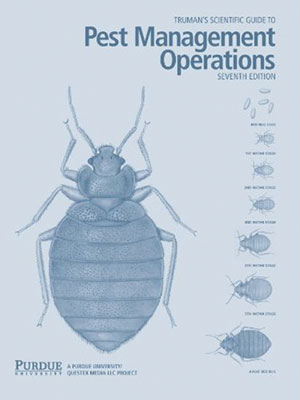 29. Orkin wins insanity trial
29. Orkin wins insanity trial
In 1960, PMP Hall of Famer and Orkin Exterminating founder Otto Orkin (Class of 1999) took his children to court about their alleged conspiracy to have him declared insane and take over the company. The eccentric Orkin was vindicated when the Georgia courts found he was mentally competent. He sold the business to Rollins Corp. in 1964.
30. Pest Control serializes Scientific Guide
2002 PMP Hall of Famer Dr. Lee Truman’s most notable accomplishment essentially started as a serialized guide in Pest Control magazine in 1961: Truman’s Scientific Guide to Pest Control Operations. The seventh edition of this industry bible is available today in both English and Spanish.
31. Durban introduced
Chlorpyrifos, the active ingredient in Durban, was discovered and synthesized in 1961 by Ray Rigterink, a research scientist from Dow Chemical Co., a legacy company of Corteva Agriscience. By 1981, Durban’s family of products included the popular Durban TC termiticide. In 2000, the then-manufacturer Dow AgroSciences started phasing out the chemical voluntarily.
32. Silent Spring published
The environmentalist movement can trace its formal start to the publication of Rachel Carson’s Silent Spring in 1962. The book intended to expose the damage to nature that pesticides can bring when used irresponsibly. Unfortunately, the public made the snap judgment that society would be better off without pesticides completely. Since then, the pest management industry has worked hard to dispel this negative public perception, showing the consequences of a world where pests aren’t under control.

Getty Images: ViniSouza128/iStock / Getty Images Plus
33. Formosan termitesfound in Houston, Texas
Coptotermes spp., native to China, Formosa (now Taiwan) and Japan, in the U.S. is believed to have been introduced to Hawaii via military supplies returned from Asia after World War II. The 1956 Houston discovery is considered the first in the continental U.S. Today, Formosan termite colonies are plentiful throughout the southeastern U.S.
34. U.S. National Academy of Sciences formalizes integrated pest management (IPM)
IPM seems to have come together in various places globally at the same time, but can be traced to 1952 with “integrated control,” the philosophy of combining chemical and biological methods in agriculture. Although the term IPM was formalized in 1969, PMPs still are defining what the concept means.

Getty Images: Gromit702 / Getty Images Plus
1970s
35. EPA founded
In 1970, the U.S. Environmental Protection Agency (EPA) was established. President Richard Nixon appointed a White House committee in December 1969 to consider whether there should be a separate environmental agency, while at the same time Congress passed the National Environmental Policy Act. Nixon nominated Assistant Attorney General William Ruckelshaus to lead the agency.
36. Sustainability
Sustainability isn’t so much a buzzword anymore as it is reality. The federal environmental regulations and pesticide restrictions Silent Spring led to, in addition to the first Earth Day in 1970, piqued public awareness and inspired pest management companies to become more environmentally conscious.
37. Insect-O-Cutor introduces “escape-proof” electrocutor unit
Formally tested by the USDA and deemed scatter-free, the FDA designated the IOC Series 712 models acceptable for in-processing areas in the early ’70s. In 1990, Series 1890/2591 also would be designated escape-proof by the two agencies.
38. FIFRA amended
The Federal Environmental Pesticide Control Act of 1972 amended the 1947 Federal Insecticide, Fungicide and Rodenticide Act, establishing a program for controlling the sale, distribution and application of pesticides through an administrative registration process. The amendments provided for classifying pesticides for general or restricted use, as well as authorizing experimental use and permits. It also provides for administrative review of registered pesticides and for penalties for violations of the statute.
39. First photostable synthetic pyrethroid developed
Permethrin was created in 1973, and by 1977, the product was on the market. Data indicate more than 100 million applications of permethrin are made each year in U.S. homes and lawns.
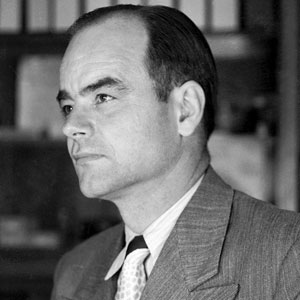
Dr. Walter Ebeling
40. Dr. Ebeling publishes Urban Entomology
Considered the “Father of Urban Entomology,” 2003 PMP Hall of Famer Dr. Walter Ebeling taught at UCLA from 1946 to 1975. His book, Urban Entomology, was published in 1975. Subsequent editions are a mainstay on many PMPs’ bookshelves.
41. First insect growth regulator (IGR) registered
In 1972, the then 4-year-old manufacturer Zoëcon patented a highly efficacious juvenile hormone analog: isopropyl 11-methoxy 3,7,11 trimethyldodeca-2, 4-dienoate. This compound, methoprene, became the first commercial Insect Growth Disruptor (IGD). (S)-Methoprene, registered by the EPA in 1975, was the first to mimic the action of an insect growth-regulating hormone, preventing the normal maturation of insect larvae. Today, IGRs are a widely accepted method for controlling many pests.
42. First household-grade wettable powder introduced
Ficam (bendiocarb) entered the market in 1976. Until its voluntary cancellation in 2000 by AgrEvo, a legacy company of Envu, the carbamate was used widely for the control of cockroaches and other structural pests.
43. First pheromone registered
Gossyplure was registered in 1978 to disrupt the breeding of pink bollworms on cotton. Since then, the power of pheromones has been refined and studied for use on various structural pests.

Getty Images: eurobanks/iStock / Getty Images Plus
44. DeLay embarks on political career
U.S. Majority House Whip Tom DeLay owned Albo Pest Control when he was elected to the Texas House of Representatives in 1978. In 1984, nicknamed “The Exterminator,” he moved to the U.S. House of Representatives, taking several active and high-profile leadership roles.
45. FIFRA amended again
The 1978 amendment gave states broader authority and responsibility for registering pesticides. States automatically have authority to register pesticides for use within the state for special load needs. Previously, states had registration authority only with approval of the EPA.
1980s
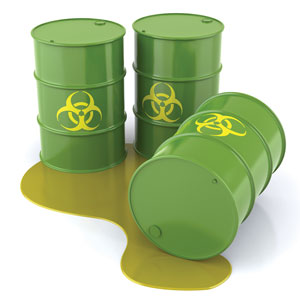
Getty Images: klenger/iStock / Getty Images Plus
46. Superfund passed forcleanup of toxic wastes and spills
President Jimmy Carter signed Superfund legislation into law in 1980. Superfund was intended to provide temporary emergency funding for the cleanup of chemical waste if responsible parties (including those in the professional pest management industry) couldn’t be found or were unable to pay.
47. PESCO fails
The mid-1980s were a difficult time for the NPCA. When its insurance company, PESCO, began in 1979, the future seemed rosy. By 1984, as PESCO fell victim to the insurance crash of the 1980s, it was a dimmer proposition. The fallout of PESCO’s troubles is believed to have contributed in part to the sudden departure of then-NPCA Executive Director Jefferson Keith.
48. Dr. Su develops Sentricon
2018 PMP Hall of Famer Dr. Nan-Yao Su developed a reduced-risk monitoring/ baiting procedure for subterranean termites. His work during the 1980s led to the registration of hexaflumuron in 1994, and a short time later, the introduction of the Sentricon Termite Colony Elimination System, which today is available from Corteva Agriscience.
49. OSHA develops Hazard Communication Standard
In 1986, the Federal Hazard Communication Standard was designed by the U.S. Occupational Safety and Health Administration (OSHA) to require employers to furnish employees with information about the hazards of chemicals used in the workplace — and protective measures employees can take to reduce their exposure to those chemicals.
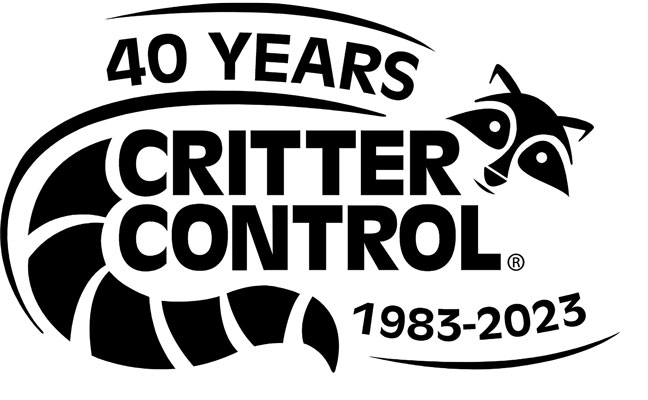 50. Clark incorporates Critter Control
50. Clark incorporates Critter Control
Urban wildlife control specialist Kevin Clark incorporated the name Critter Control in 1986, eventually growing via franchises to more than 100 offices across most U.S. states. Previously, wildlife control was mainly the mainstay of trappers and wasn’t available to the public. Today, Critter Control is a Rollins brand.
51. First national Legislative Day held
The NPCA began its Legislative Day program in 1987 with 35 participants. Presently, the two-day event attracts hundreds of PMPs to Washington, D.C., every spring. Throughout the years, the voice of PMPs on Capitol Hill is said to have affected legislation such as the Food Quality Protection Act.

Photo: PMP Archives
52. Dietrich invents Bora-Care
The termite and wood-destroying insect (WDI) industry saw a breakthrough in 1987, when Bud Dietrich invented a product called Bora-Care as a wood preservative for log homes. When he learned entomologists found the product to be toxic to various WDI, he moved into the pest control arena, founding Nisus in 1990.
53. Microencapsulated insecticide introduced
In 1988, then-Dow AgroSciences, a legacy company of Corteva Agriscience, rolled out Durban ME insecticide, the first microencapsulated insecticide. The delivery system provided longer insect control. Other companies and products promptly followed suit.

Bob Rosenberg
54. Rosenberg joins national association staff
From 1989 to 2016, Bob Rosenberg, the NPMA’s director of government affairs and a member of the PMP Hall of Fame (Class of 2013), worked on behalf of the industry to promote responsible, progressive legislation and regulations. He was often the visible spokesperson for the association about legislative issues — including a regular column in Pest Control with fellow PMP Hall of Famer Gene Harrington (Class of 2014) and had the respect of the industry.
1990s
55. Clean Air Act of 1990 passed
Among other provisions, the Clean Air Act called for a halt on the production of chemicals threatening the ozone layer.
56. Responsible Industry for a Sound Environment (RISE) forms
The manufacturers and suppliers of specialty pesticides and fertilizers formed RISE in 1991 to advocate for the industry at a time when the industry was under intense scrutiny by environmentalists and lawmakers. The Washington, D.C.-based association continues to monitor legislative and regulatory issues today.
57. CPCO of Florida founded
2001 PMP Hall of Famer Mel Edelstein worked diligently with what’s now the Florida Pest Management Association, but then broke away with nine others to form Certified Pest Control Operators (CPCO) of Florida in 1994.
58. Gold leaves NPCA
Velsicol executive Harvey Gold seemed to be a perfect fit in the wake of the PESCO troubles the NPCA had in 1984. However, Gold made waves 11 years later in a staffing dispute that ended in his abrupt departure in 1995. Lawsuits and settlements followed.
59. Cooper designs NPCA logo
When 1999 PMP Hall of Famer Norm Cooper designed the “Guardians of the Environment” logo during his tenure as the 1991-92 president of the NPCA, he meant what it implied: PMPs are environmentalists in the truest sense of the word.

Photo: Wahooo/iStock / Getty Images Plus/Getty Images
60. The internet is available to the masses
The development of the World Wide Web has been attributed to everyone from the U.S. Department of Defense to British computer scientist Tim Berners-Lee. One thing is certain: The internet continues to change our world every day.
61. GPS arrives

Getty Images: alexsl/iStock / Getty Images Plus
Global Positioning System (GPS) technology, originally developed in 1973 by the U.S. Department of Defense, became operational in 1994. Within a decade, businesses with mobile fleets adopted the technology for improved routing, job tracking and employee accountability.
62. FQPA passed unanimously by Congress
The Food Quality Protection Act (FQPA) of 1996 fundamentally changed the way the EPA regulates pesticides. The requirements included a new safety standard — reasonable certainty of no harm — that must be applied to all pesticides used on foods. The FQPA’s path is littered with the cancellations of old standbys, including Dursban (chlorpyrifos) and Ficam (bendiocarb).
63. NPCA introduces the Industry Awareness Council (IAC)
Now known as the Professional Pest Management Alliance (PPMA), the lAC was introduced in 1997 to bring the industry’s image professionally to the public. The PPMA continues to fulfill its positive public relations mission today.
64. Business software replaces handwritten systems
PMPs begin to reap the benefits of advancements in business software, which automate tedious accounting tasks such as general ledger, payroll and taxes. Software management programs — for computers, tablets and smartphones — now handle billing, routing and scheduling, saving PMPs considerable time and money.

Getty Images: witsawat sananrum/iStock / Getty Images Plus
65. FTC investigates termite treatment practices
Although the Federal Trade Commission (FTC) seems more concerned with the claims made by certain ultrasonic pest control manufacturers, its interest in the late 1990s was termite services. The commission investigated larger companies, but the main consequence of the investigation concerned efficacy claims made by the do-it-yourself baiting product Spectracide Terminate.
66. Operation Full Stop began
Formosan termites did so much damage in New Orleans’ French Quarter that the USDA-ARS implemented Operation Full Stop, an experimental baiting and termiticide program that ran from 1998 to 2011.
67. Termidor receives EPA registration
In 1999, the termite industry was turned on its ear once again when Aventis introduced Termidor liquid termiticide (fipronil) to the market. Although the product was in the spotlight because of the uncertainty of its fate (BASF owns the product today), Termidor made it OK to like liquid termiticides again.
68. School Environment Protection Act (SEPA) introduced
In 1999, U.S. Sen. Robert Torricelli (D-NJ) introduced the first version of SEPA, which mandated a federal school IPM program. Its  various forms were defeated repeatedly during the next three years, but by 2002, the NPMA was able to ensure the language was at least tolerable to PMPs.
various forms were defeated repeatedly during the next three years, but by 2002, the NPMA was able to ensure the language was at least tolerable to PMPs.
69. NPCA becomes NPMA
During Pest Management ’99 in Atlanta, the National Pest Control Association voted to change its name to the National Pest Management Association. The change occurred because the word “management” had more positive connotations and was more consumer friendly.

Dave Mueller
70. Mueller helps test and market Eco2Fume
2019 PMP Hall of Famer David Mueller’s specialty in pheromone research about stored product pests resulted in the development of a viable methyl bromide fumigant alternative, Eco2Fume. Mueller won two EPA Stratospheric Ozone Protection Awards for his work developing alternatives. The fumigant is still available today.
71. West Nile Virus (WNV) appears in the U.S.

Getty Images: Dimitris66/iStock / Getty Images Plus; Antagain/E+
This mosquito-transmitted disease brought panic to the public when it first cropped up in 1999 and rekindled the debate about whether it’s safe to spray neighborhoods. From 1999 to 2022, the Centers for Disease Control and Prevention (CDC) reports, there have been 55,569 human cases; 25,769 hospitalizations; and 2,773 deaths attributed to WNV.
2000s
72. PCOs become PMPs
Pest Control leads the way in transitioning from “PCO” (pest control operator) to “PMP” (pest management professional). It announces in its March 2000 issue it will no longer refer to pest control operators because the term “PMPs” is more professional and encompassing. The magazine’s name, in turn, changes to Pest Management Professional (PMP) with the October 2007 issue unveiled at the NPMA’s PestWorld.

Getty Images: Antagain/E+
73. Ants trend upward
In the 2000s, PMPs began to report a marked rise in ant work, with ants replacing cockroaches as the most economically important pest in many areas of the country. Research indicated the ant segment tied or surpassed termite work as the largest growth segment for much of the decade. The ant increase was blamed on warmer weather patterns throughout the country.
74. Smartphones become ubiquitous
These digital Swiss Army knives quickly became must-haves for businesses. Consider the number of devices a smartphone replaced for a few hundred dollars and a service contract: traditional cell phone, point-and-shoot camera, video camera, GPS device, personal planner, radio, landline phone, internet service and all-around entertainment center, just to name a few.
75. Loss of chemistries
Two major classes of pesticides the industry had depended on — organophosphates and carbamates — were phased out by the EPA in the 2000s. The ensuing loss of products containing these active ingredients affected the industry in numerous ways, and likely changed everything from control strategies to training to consumer pricing, to the pest pressures themselves.
76. Whitman speaks at Legislative Day
The industry came a long way from Earth Day in 1970 when EPA Administrator Christine Todd Whitman was the keynote speaker during the 2002 Legislative Day event. The special luncheon was held at the National Press Club headquarters in Washington, D.C. The event heralded a new era of understanding between agency and industry.
77. Termite nonrepellents introduced
New nonrepellent termiticides were launched, generating excitement in the industry. A strong economy and housing boom led to record levels of treatments and inspections.
78. Perimeter work becomes popular
Related to the rise of demand for green products and the increasing scrutiny paid to pesticides used in the home, perimeter-only treatments for general pest control increased considerably. Getting residual products out of living spaces was a trend that gave rise to using perimeter treatments as barriers to prevent pests from gaining entry into homes and buildings. New materials designed to be more stable for outdoor use include microencapsulated and suspended concentrate formulations of insecticides.
79. Parasites return with a vengeance
Bed bugs are back — and so are their parasitic brethren: fleas, ticks and mosquitoes. This re-emerging, blood-sucking foursome represents new technical obstacles, but with that comes big business opportunities for PMPs.

Getty Images: Umnat Seebuaphan/iStock / Getty Images Plus; Antagain/E+
80. Social media changes everything
For some, social media is a compulsion; for others, it’s a necessity. First, it dominated social lives, but now it links the business world. The first social media site, Geocities.com, launched in 1994 and faded soon after. Today’s giants are going strong and boosting small businesses with their marketing abilities. LinkedIn and X (formerly Twitter) have more than 930 million and 450 million users, respectively, while Facebook now touts more than 3 billion active monthly users.
81. Bug Off New York Expo begins
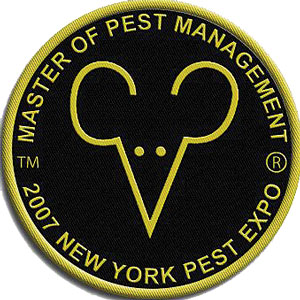 Andy Linares, founder and president of New York City’s Bug Off Pest Control Center, offers PMPs supplies and equipment, training programs, special events, an online store, technical backup, and business support services. Since 2003, he also has hosted the New York Pest Expo, which features technical presentations for continuing education units, and manufacturer exhibits showcasing the latest new products and services.
Andy Linares, founder and president of New York City’s Bug Off Pest Control Center, offers PMPs supplies and equipment, training programs, special events, an online store, technical backup, and business support services. Since 2003, he also has hosted the New York Pest Expo, which features technical presentations for continuing education units, and manufacturer exhibits showcasing the latest new products and services.
2010s
82. Pollinators and colony collapse
Although many stinging insects are potential health threats to people and animals, pollinators are essential because they make it possible for plants to produce seeds, fruit and young plants by facilitating fertilization. Colony collapse disorder posed a threat to bees, however. To help ensure the protection of pollinators, the EPA strengthened pesticide labels by including a bee advisory box. In 2015, the White House released its National Strategy to Promote the Health of Honey Bees and Other Pollinators.
 83. PMP Growth Summit launches
83. PMP Growth Summit launches
Each year, PMP invites approximately two dozen handpicked pest control company decision makers with businesses that earn $1 million or more to the Reunion Resort & Golf Club in Kissimmee, Fla. Once there, they are treated to two days of networking, one-on-one meetings with leading industry suppliers, and roundtable discussions on best practices for running a pest control company.
84. Women give, get support
For proof the number of women working in the pest management industry has grown over the years, look no further than the Professional Women in Pest Management (PWIPM), an NPMA council, and Women in Pest Control, a Facebook group with a yearly in-person meeting. These two organizations offer support to women who work in this male-dominated field.

Getty Images: vchal/iStock / Getty Images Plus
85. Drone use takes off
PMPs use unmanned aerial vehicles, or drones, equipped with cameras to perform faster, safer inspections without ladders. They also use them for bird control, as well as other pest management tasks. Users must be licensed to fly drones.
86. Remote monitoring for rodents
Rodent control sensing devices are mousetraps with electronic monitors attached. Technology varies by manufacturer, but the basic concept is the same: A battery-operated sensor is placed on a trap and when a pest is caught, the PMP is alerted via text or email. The sensor gathers data that PMPs can then use to plan a rodent management strategy.
87. CSI launches game-changing technology
In 2019, Control Solutions Inc. (CSI) created a Pressurized Solutions line of pressurized aerosol products made in its Pasadena, Texas, manufacturing plant. In addition, its patented Precision Delivery System, or PDS, delivers a dry flowable product for effective control despite using fewer chemicals.

Getty Images: kyoshino/iStock / Getty Images Plus
88. Pandemic changes everything
The COVID-19 pandemic was no match for PMPs. They stepped up when much of the country shut down because they are dedicated to protecting public health. Most pest control companies experienced a boost in business, as people sequestered at home noticed pests they didn’t know they had, and the demand for sanitation and disinfecting services, which many PMPs began to offer, increased.
2020s
89. Crackdown on illegal online pesticide sales
In 2021, the EPA and Amazon agreed to a $1.2 million settlement amid allegations the online retailer committed thousands of FIFRA violations by allegedly allowing third parties to sell and distribute imported pesticides, even though the products were not licensed for sale in the U.S.
90. Artificial Intelligence (AI)
PMPs have been using machines that think like humans for years. Routing software is just one example of how technology helps improve efficiency, reduce costs and save time.
Leave A Comment